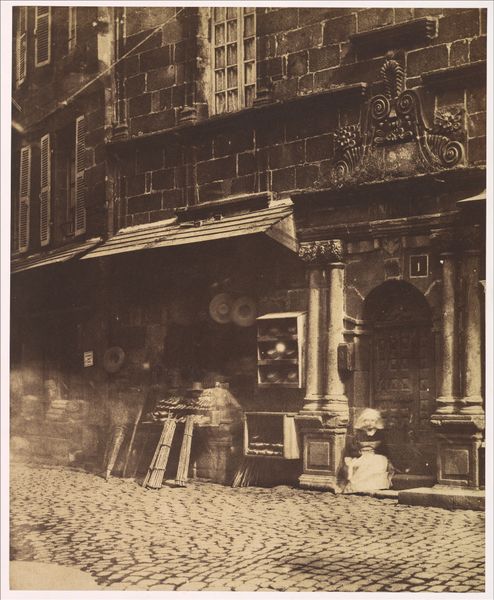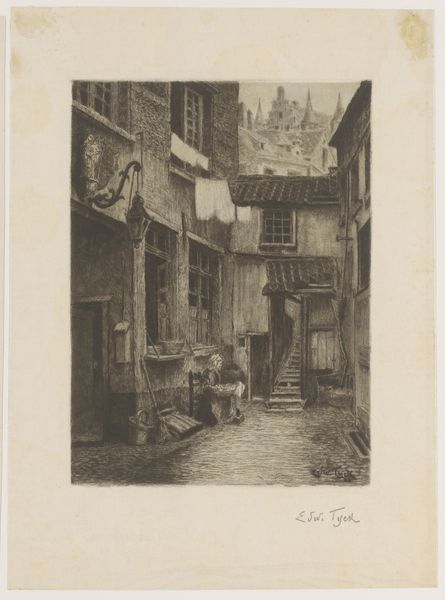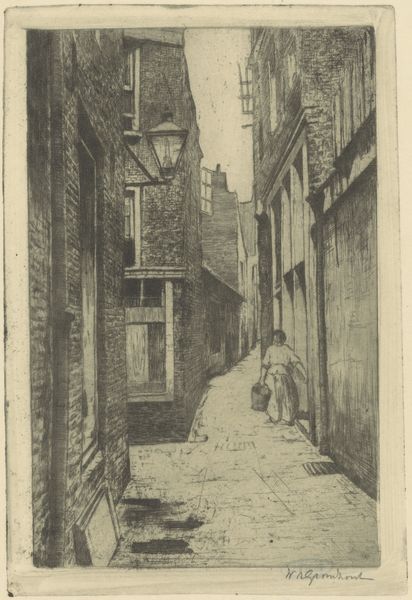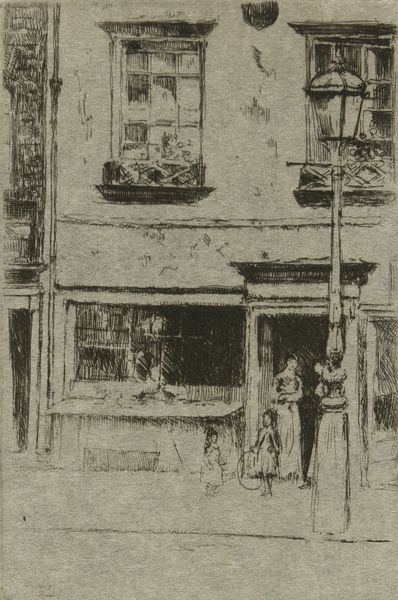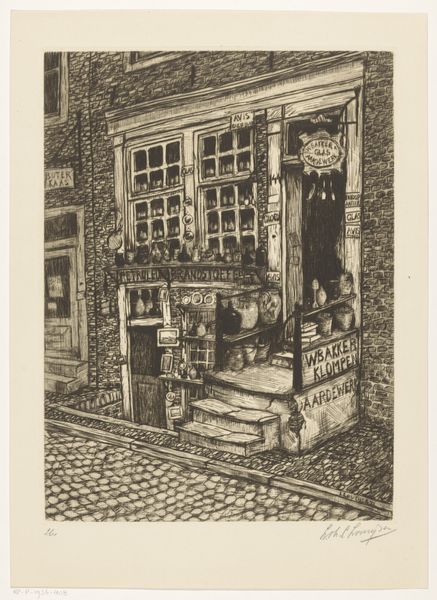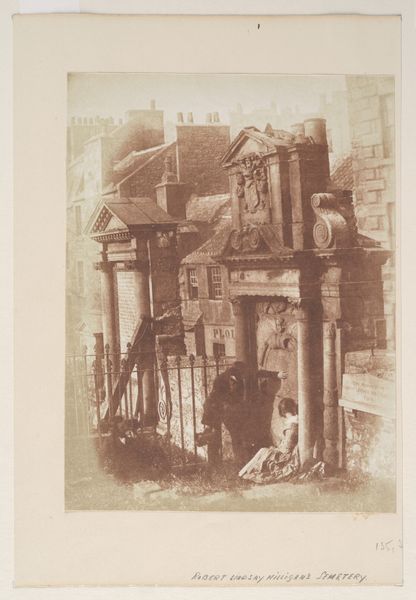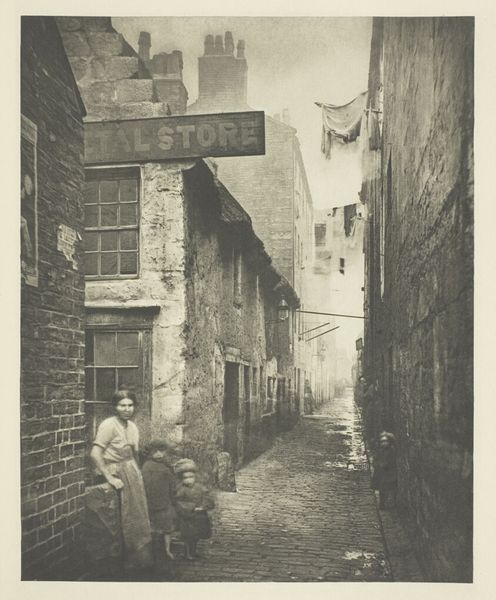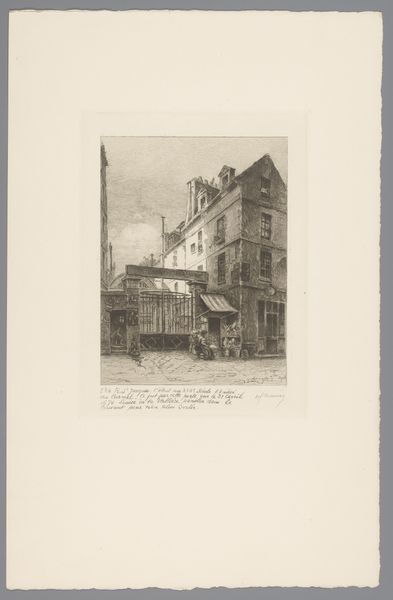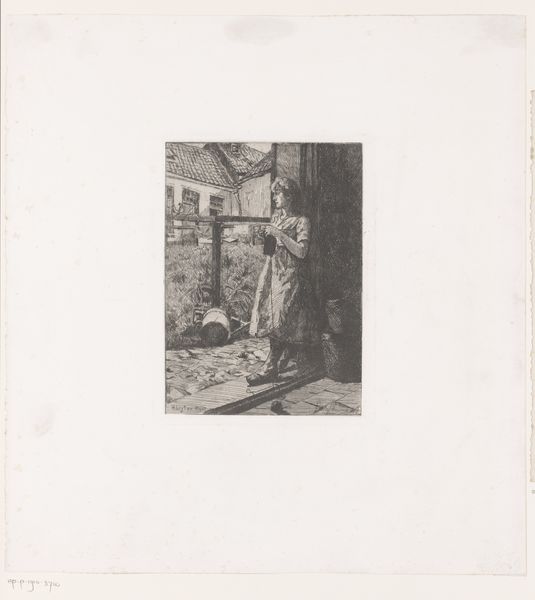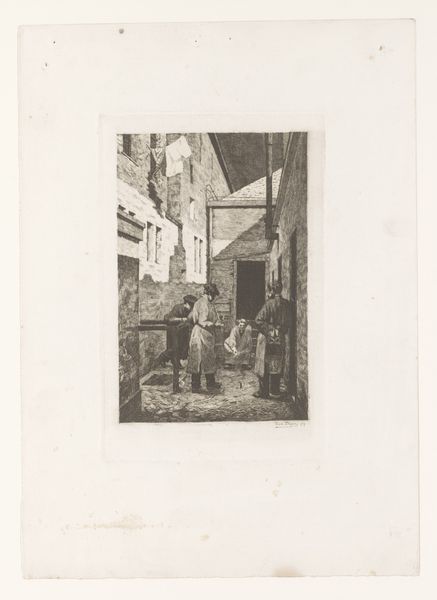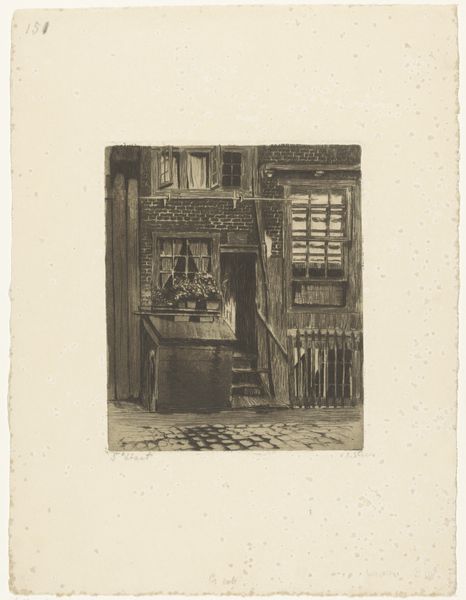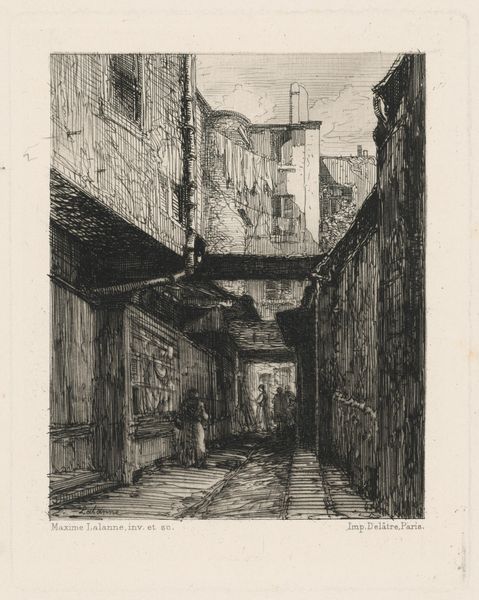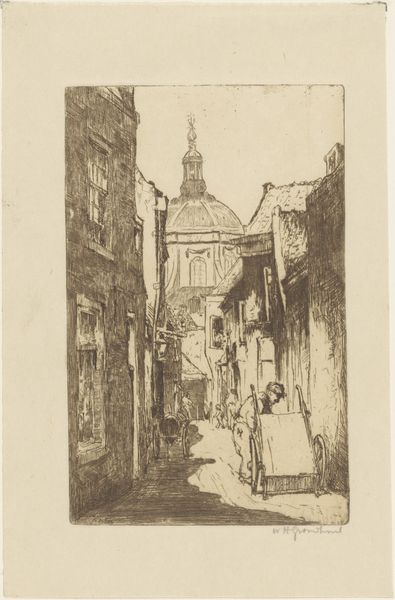
Dimensions: height 200 mm, width 148 mm
Copyright: Rijks Museum: Open Domain
Editor: This is Rodolphe Piguet's "Prentwinkel," a lithograph and etching from around 1900. I'm struck by how grainy and almost dreamlike it is, yet it captures such an everyday urban scene. What do you see in this piece? Curator: This image speaks volumes about the burgeoning urban experience at the turn of the century and it shows some pretty obvious economic structures that often get missed. How would access to information change for women living in a city like Paris at the time? Notice the woman at the newsstand: what could affordable print media mean to someone like her? And who would it exclude? Editor: So you’re saying this isn’t just a snapshot of a street, but a reflection of social mobility, too? Curator: Precisely! The “hotel” sign suggests transient populations, while the print shop offers potential knowledge, entertainment, and connection. However, we must ask, “Who gets to participate in this culture?” Are these readily available sources for the working class or are they catering to more affluent sensibilities? It's imperative that we examine the image not just for its aesthetic qualities but also for the inherent politics of representation, and the dynamics of gender, class, and access it presents. Editor: It’s fascinating to consider how this simple scene hints at much larger power dynamics in Parisian society. The print shop isn't just selling papers; it's selling or limiting access to ideas. Curator: Exactly. Understanding the sociopolitical context enriches our interpretation of even seemingly simple images. It allows us to question narratives and uncover deeper meanings embedded within the artwork. Editor: I’ll definitely look at art differently from now on, always thinking about the bigger picture. Curator: That's all that I can ask.
Comments
No comments
Be the first to comment and join the conversation on the ultimate creative platform.
